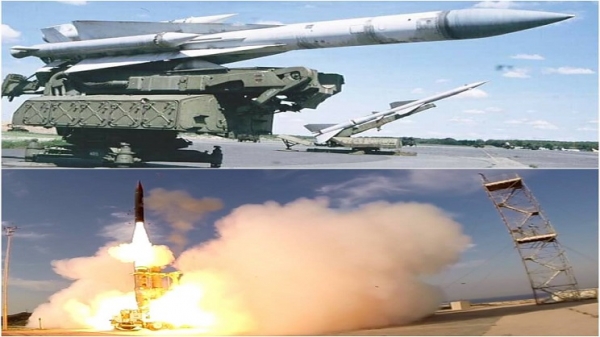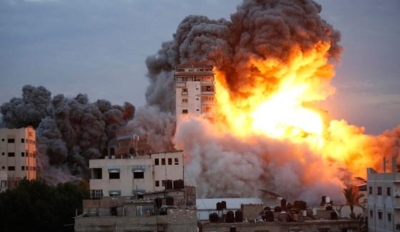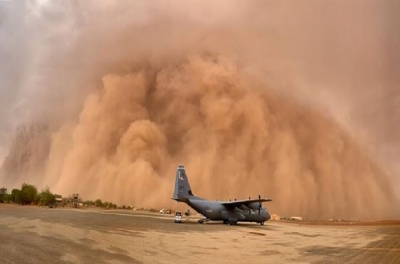On march 17th, Israeli Defense Forces released on their official twitter account "overnight, IAF aircraft struck several targets in Syria and were fired upon by anti-aircraft missiles". This statement was considered "unusual" due to the fact that IDF's common policy consisted in remaining silent when carrying out airstrikes in Syria with the aim of preventing high-value weaponry (sophisticated SAM systems, anti-ship missiles or even ballistic missiles such as 4th gen Fateh-110) from crossing the Syrian-Lebanese border into Hezbollah's hands. The only acknowledged and announced IDF actions concerned retaliations in response from incoming fire on the Syrian-Israeli border.
Today's statement made no mention of retaliatory measures yet it mentioned that airstrikes were conducted against Hezbollah’s strategic assets in Syria’s Homs district, not far from the recently freed Palmyra, recently liberated by the Syrian army's fifth legion with a backing from Russia.
Later on, Israeli media reported that the Arrow/Hetz system, a joint air defense program funded and produced by Israel (IAI) and the United States (Boeing), intercepted an S-200 (Code named by NATO as the SA-5) Surface-to-Air Missile. Israeli Home Front alarm sounded throughout the southern environs of Jerusalem and the Jordan valley while pieces of the arrow 2 rocket were found in Jordan
The Syrian Ministry of Defense acknowledged, in its turn, the airstrike on one of its military sites in eastern Homs, adding that Syrian air defenses managed to shoot down an aircraft over the occupied territories, damaged another and forced the rest to flee. This claim was later on denied by Israel
In this clash, qualified as the most serious between both countries in several years, both stories are quite confusing and inconsistent. Therefore, a number of questions have to be asked and some hypotheses are to be considered: First, the raid's location is a clear violation of the Putin-Netanyahu’s secret agreement concerning IDF's code of conduct against Hezbollah-destined weapons convoys. The raid's location, quite distant from the Lebanese border, is quite uncommon especially that a Syrian SSRC's production plant, where long-range missiles destined for Hezbollah are produced, is located near Damascus. Therefore, the claim of targeting high-value weaponry is to be questioned without undermining the elimination of a high-value target.
Second, the use of the Arrow system is also to be questioned especially that it is not made to intercept SAMs. Such Anti-air systems aren't stored in the system's database, which is supposed to automatically track trajectories and predict impact point of incoming missiles before engaging the ballistic missile. This may be inefficient against an S-200 missile since once fired, the missile disengages with its attached boosters to create 5 unpredictable targets. Consequently, there is no point of engaging the Arrow system beside for demonstration purposes.
The third and final issue concerns the shoot down of an aircraft by the Syrian air defense. The scenario remains plausible if we took into consideration the fact that the Israelis F-16 were escorted by drones, primary for ISR missions, in a similar way to what happened during Operation Mole Cricket 19. Back then, a squadron of Tadiran Mastiff and IAI scout drones were used to confuse Syrian SAM systems located near the Beqaa valley in 1982. Otherwise, these claims are to be seriously questioned.
Regardless of the chosen assumption, this new incident marks a new chapter in the regional confrontation. Shortly after Netanyahu's visit to Moscow, The Israelis broke the previously drawn red line with Russia, a major regional actor providing direct military assistance to the Syrian government, thus indicating their will to counter the Iranian influence in Syria regardless of the outcome even if it leads to an interference in the Russia-US air space management in Syria. On the other side, the choice of countering the Israeli aggression for the first time in the Syrian conflict cannot be only considered from a sole Syrian perspective. On the contrary, it marks a regional choice made by Assad and his allies from Teheran to Beirut, in what it is sometimes called the Shiite crescent, thus showing the capability to escalate even after six years of conflict.




